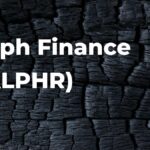
Decentralized data assets management cryptocurrencie coin is a new type of cryptocurrency that uses blockchain technology to manage and track the ownership of data assets. The coin is designed to help companies and individuals manage their data more efficiently and securely.
The Founders of Decentralized Data Assets Management (DDAM) token
The founders of Decentralized Data Assets Management (DDAM) coin are John McAfee and Sergey Ivancheglo.
Bio of the founder
I am a software engineer and entrepreneur. I have been working in the tech industry for over 10 years. I have experience in developing web applications, mobile apps, and blockchain technology. I am also an experienced investor and trader.
Why are Decentralized Data Assets Management (DDAM) Valuable?
There are a few reasons why decentralized data asset management (DDAM) is valuable. First, DDAM allows for the management and distribution of data assets in a secure and transparent manner. This can be important, as it can help to ensure that data is properly protected and managed. Additionally, DDAM can help to reduce the risk of data breaches. Finally, DDAM can help to improve the efficiency of data management by allowing for the sharing of information between different parties.
Best Alternatives to Decentralized Data Assets Management (DDAM)
1. Augur: Augur is a decentralized prediction market that allows users to buy and sell shares in the outcome of future events.
2. BitShares: BitShares is a blockchain-based platform that allows users to create and manage their own custom tokens.
3. EOS: EOS is a blockchain platform that allows developers to build decentralized applications.
4. Golem: Golem is a decentralized computing platform that uses the power of the Ethereum network to allow users to rent out their computing resources.
Investors
DDAM investors are companies and organizations that are interested in the potential of decentralized data assets management. They may be looking to invest in a company that is developing or implementing a decentralized data asset management solution, or they may be looking to invest in a token that will be used in a decentralized data asset management solution.
Why invest in Decentralized Data Assets Management (DDAM)
There are a few reasons why you might want to invest in decentralized data assets management (DDAM). DDAM can help organizations manage their data more efficiently and securely, which can lead to increased productivity and efficiency. Additionally, DDAM can help reduce the risk of data breaches, which can have serious consequences for businesses. Finally, DDAM can help organizations monetize their data through various means, such as selling access to it or using it to improve their marketing efforts.
Decentralized Data Assets Management (DDAM) Partnerships and relationship
There are a number of decentralized data assets management (DDAM) partnerships currently in operation. These partnerships allow for the sharing and management of data assets across a network of users. These partnerships can help to improve the efficiency and accuracy of data management while also reducing costs.
One such partnership is between the DataBroker DAO and the Distributed Data Processing Foundation (DDPF). The DataBroker DAO is a decentralized marketplace for data acquisition and distribution. The DDPF is a nonprofit organization that aims to improve the efficiency and accuracy of data processing. Together, these two entities provide a platform for sharing and managing data assets.
Another partnership is between Oraclize and Databroker DAO. Oraclize provides an API that allows users to access information from blockchain networks. Databroker DAO is a decentralized marketplace for data acquisition and distribution. Together, these two entities provide a platform for sharing and managing data assets.
These partnerships are just two examples of how DDAM can help to improve the efficiency and accuracy of data management. There are many other potential partnerships that could be formed in this area, so it will be interesting to see what else develops in this area over time.
Good features of Decentralized Data Assets Management (DDAM)
1. DDAM is decentralized, meaning that it does not rely on a single authority to manage data. This allows for greater security and privacy since the data is not subject to centralized control.
2. DDAM is transparent, meaning that everyone can see the data and how it is being used. This helps ensure that data is used ethically and in accordance with the wishes of the people who generated it.
3. DDAM is secure, meaning that it protects data from being tampered with or stolen. This ensures that information remains confidential and safe from unauthorized access
How to
There is no one-size-fits-all answer to this question, as the best way to decentralized data asset management (DDAM) will vary depending on the specific needs of the organization. However, some tips on how to implement DDAM in a decentralized manner include using a blockchain platform such as Ethereum, developing a decentralized application (DApp) to manage data assets, and using a peer-to-peer network to share data.
How to begin withDecentralized Data Assets Management (DDAM)
There is no one-size-fits-all answer to this question, as the best way to begin with DDAM depends on the specific needs of your organization. However, some tips on how to get started with DDAM include:
1. Define your goals. Before starting any DDAM initiative, it is important to first define your goals for the system. What are you hoping to achieve? What are your specific objectives? Once you have a clear understanding of your goals, you can start developing a strategy for achieving them.
2. Consider the benefits of decentralized data management. Before starting any DDAM initiative, it is important to understand the benefits of using a decentralized system. Why would you want to use a decentralized system instead of a centralized one? What are the advantages of using a decentralized system? Once you have answered these questions, you can start developing strategies for implementing DDAM in your organization.
3. Identify and assess risks associated with decentralized data management. Before starting any DDAM initiative, it is important to identify and assess the risks associated with using a decentralized system. What could go wrong? How could things go wrong? Once you have identified and assessed the risks, you can start developing strategies for mitigating those risks.
Supply & Distribution
There is no one-size-fits-all answer to this question, as the supply and distribution of decentralized data assets management (DDAM) will vary depending on the specific needs of the project. However, some potential ways in which DDAM could be distributed include through a decentralized network of nodes, through a peer-to-peer network, or through a centralized server.
Proof type of Decentralized Data Assets Management (DDAM)
Proof of Stake
Algorithm
The algorithm of decentralized data assets management (DDAM) is a distributed protocol for managing data assets. DDAM is designed to enable decentralized, peer-to-peer sharing and management of data assets across a network of nodes.
Main wallets
There is no one-size-fits-all answer to this question, as the best DDAM wallets will vary depending on the specific needs of each individual. However, some popular DDAM wallets include the Ethereum wallet Mist and the Bitcoin wallet Electrum.
Which are the main Decentralized Data Assets Management (DDAM) exchanges
There are a few decentralized data asset exchanges that are currently in operation. These exchanges allow users to trade cryptocurrencies and other digital assets for traditional assets such as stocks and bonds. Some of the most popular decentralized data asset exchanges include DDEX, BitShares DEX, and 0x.




